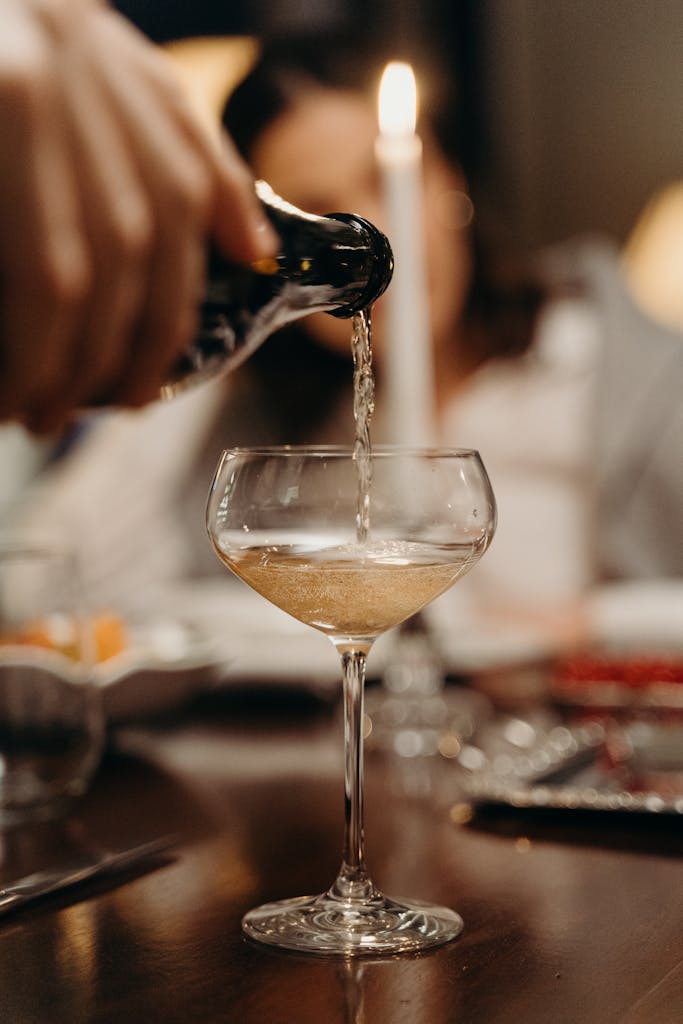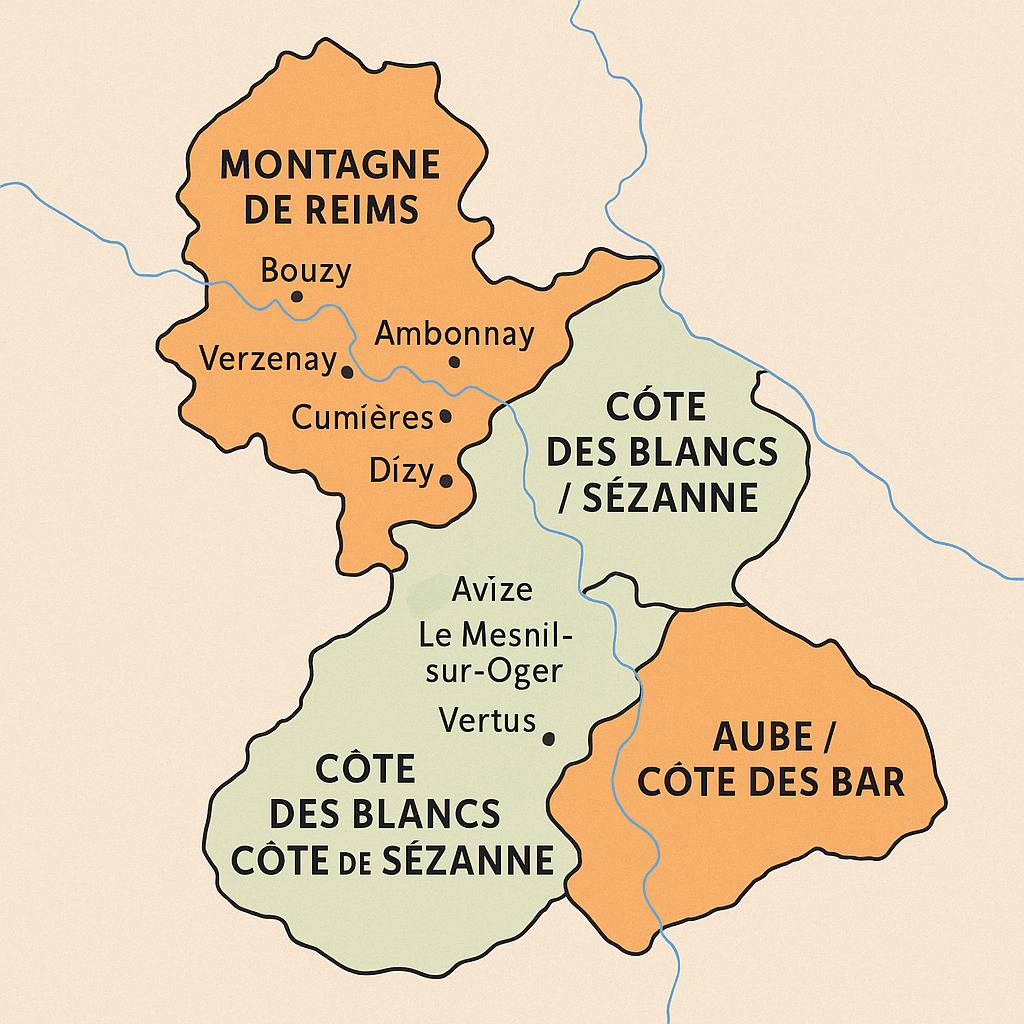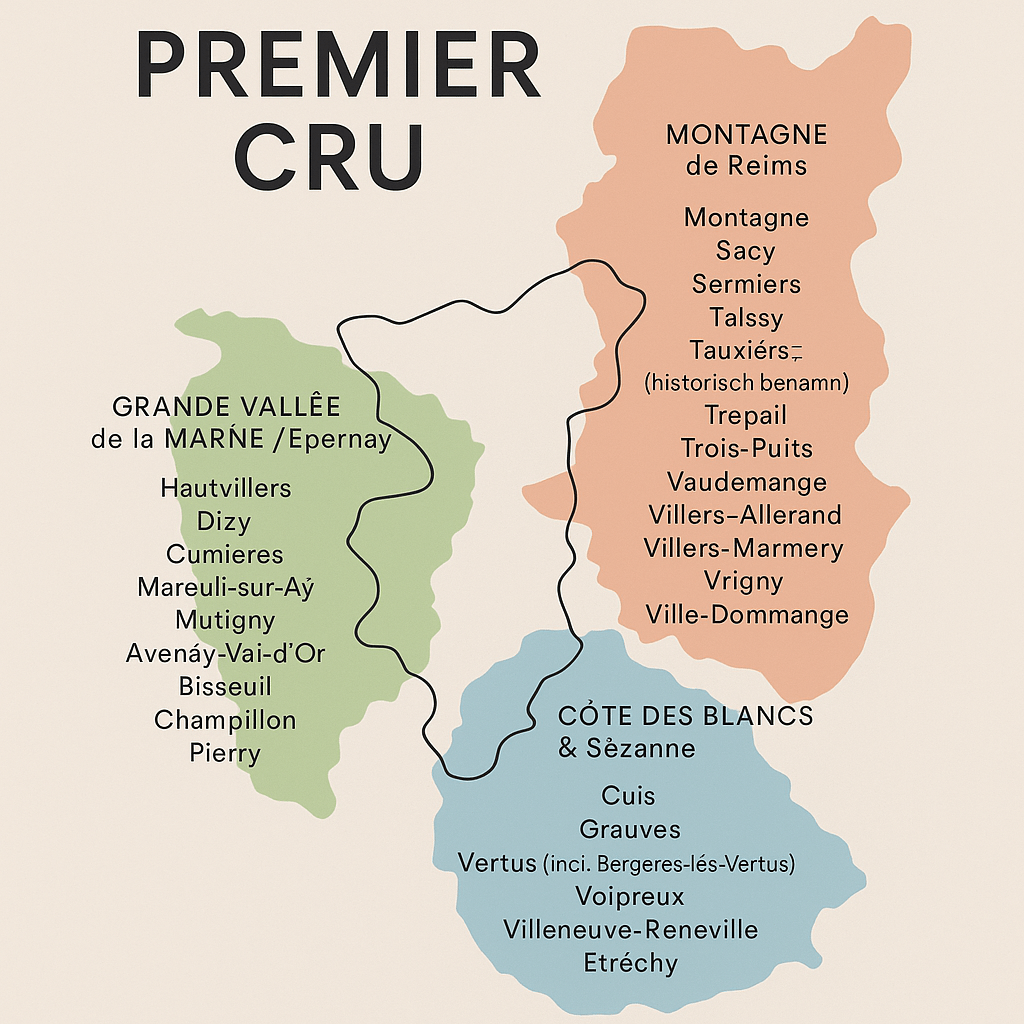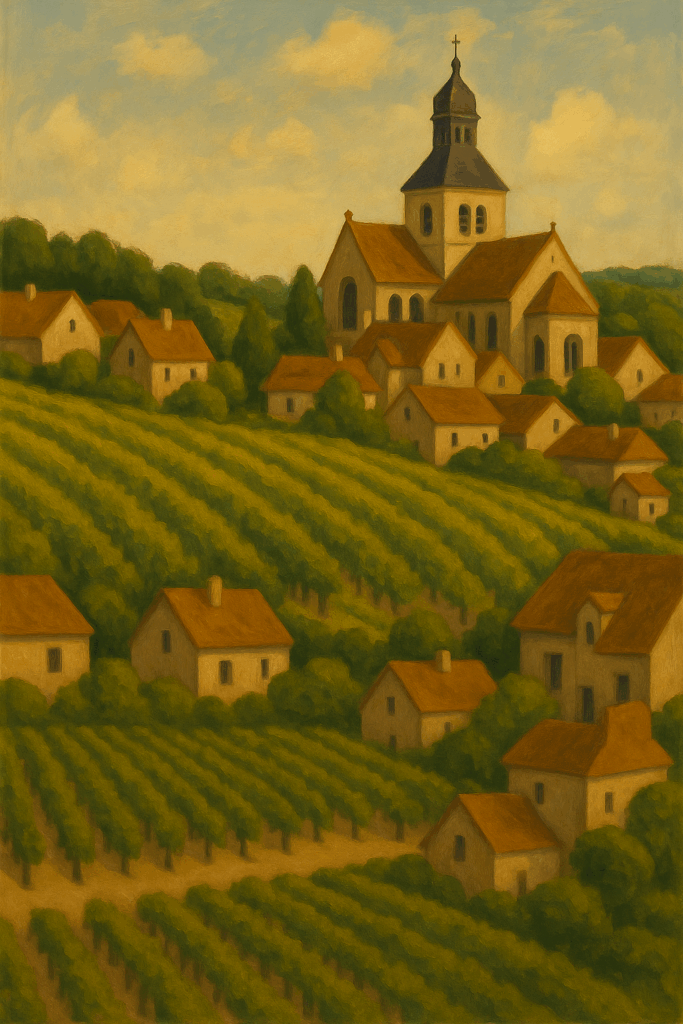Crus of Champagne
You are standing in Hautvillers, above the Marne Valley, between the rows of Pinot Noir, Meunier and Chardonnay. To the left, the abbey where Dom Pérignon worked; below, the roofs of Premier Cru villages such as Cumières and Dizy. It is no coincidence that this landscape is UNESCO World Heritage: here Champagne developed from still wine to sparkling wine according to the traditional method.
What is a “cru” in Champagne?
In Champagne, cru means village, not an individual plot as in Burgundy. The historic Échelle des Crus linked villages to a percentage for grape prices (80–89% = “autres crus,” 90–99% = Premier Cru, 100% = Grand Cru). The terms Grand Cru and Premier Cru were officially introduced in 1952; the price scale was abolished by the INAO in 2010, but the designations remained permitted.
How does Grand Cru / Premier Cru work on the label?
A Champagne may be called Grand Cru if 100% of the grapes come from the 17 Grand Cru villages. Premier Cru is allowed only if all the grapes come from Premier Cru villages. These indications refer to origin (the village), not to style; quality still depends on the blend (e.g. blanc de blancs, blanc de noirs, rosé), vintage, and dosage (from Brut Nature to Doux).


Where are the crus located?
The AOC covers about 34,000 ha divided over roughly 320 villages (crus). Officially, the Comité Champagne refers to four main areas: Montagne de Reims, Vallée de la Marne, Côte des Blancs and Côte des Bar, with the Côte de Sézanne often considered an extension of the Côte des Blancs. In the north, Pinot Noir dominates on the Montagne; along the Marne, Meunier excels; on the Côte des Blancs, Chardonnay takes the lead; in the Aube/Côte des Bar, you can taste the limestone of the Kimmeridgian more distinctly.
Overview (short):
- Montagne de Reims - mainly pinot noir (with Bouzy, Ambonnay, Verzenay).
- Vallée de la Marne More meunier (with Cumières, Dizy, Mareuil-sur-Aÿ).
- Côte des Blancs / Sézanne – chardonnay (with Avize, Le Mesnil-sur-Oger, Vertus).
- Aube / Côte des Bar - a lot pinot noir on Kimmeridgian limestone.
All 17 Grand Cru villages
Ambonnay; Avize; Aÿ; Beaumont-sur-Vesle; Bouzy; Chouilly; Cramant; Louvois; Mailly-Champagne; Le Mesnil-sur-Oger; Oger; Oiry; Puisieulx; Sillery; Tours-sur-Marne; Verzenay; Verzy.
Premier Cru villages
There are 42 recognised Premier Cru villages. Well-known names you also mentioned (and often seen on labels), grouped by area:
- Montagne de Reims & surroundings: Bezannes, Billy-le-Grand, Chamery, Chigny-les-Roses, Cormontreuil, Coulommes-la-Montagne, Écueil, Jouy-lès-Reims, Ludes, Les Mesneux, Montbré, Pargny-lès-Reims, Rilly-la-Montagne, Sacy, Sermiers, Taissy, Tauxières (historic name), Trépail, Trois-Puits, Vaudemange, Villers-Allerand, Villers-aux-Nœuds, Villers-Marmery, Vrigny, Ville-Dommange.
- Grande Vallée de la Marne / Epernay: Hautvillers, Dizy, Cumières, Mareuil-sur-Aÿ, Mutigny, Avenay-Val-d’Or, Bisseuil, Champillon, Pierry.
- Côte des Blancs & Sézanne: Cuis, Grauves, Vertus (including Bergères-lès-Vertus), Grauves, Voipreux, Villeneuve-Renneville, Étréchy.


Hautvillers: Premier Cru & “birthplace” of Champagne
The abbey of Hautvillers played a key role in the 17th–18th century transition from still to sparkling wine; that’s why the village is part of the UNESCO site “Coteaux, Maisons et Caves de Champagne” (including Hautvillers, Aÿ/Mareuil, and the Avenue de Champagne in Épernay). Dom Pérignon was cellar master here; his contributions were mainly in blending and quality control, not in “inventing” bubbles in a single stroke.
This is how you read style & how you pair it.
If you see “blanc de blancs,” it’s 100% Chardonnay; “blanc de noirs” is made from Pinot Noir and/or Meunier; Brut Nature through Doux indicates the sweetness/dosage level. For food pairings, you can choose harmony (for example, a soft brut with creamy textures) or contrast (salty and fresh alongside creamy or fatty), depending on what the dish needs. When tasting wine, a tulip shape glas and the right serving temprature. (for regional wine food pairing you might think of andouillette, Reims ham, or biscuit rose with Demi-Sec. For chalky soils, consider what goes into building a vinyard; and explore the harmony of wine and food, or rather the art of contrast.
FAQ
-
What does ‘cru’ mean in Champagne exactly?
A cru in Champagne is a wine-growing village. The region has 319 crus, spread over five departments. So you should not confuse it with a plot or lieu-dit.
-
How many Grand Cru and Premier Cru villages are there, and when can that appear on the label?
There are 17 villages with Grand Cru status and 42 with Premier Cru status. “Grand/Premier Cru” on the label is only allowed if all the grapes come from those classified villages, respectively.
-
Does the Échelle des Crus (the village percentages) still exist?
No. The historic price scale was abolished by the INAO in 2010. The designations Grand Cru and Premier Cru did, however, remain permitted for the villages that already had that status.
-
Does ‘Grand Cru’ say anything about style or sweetness (Brut, Extra Brut, Sec, etc.)?
No. Grand/Premier Cru refers to origin (the village), not to style or dosage. The sweetness indications are regulated separately: Brut Nature (0–3 g/l), Extra Brut (0–6), Brut (50). Tip: taste mindfully, glasses and serving temperature help with wine tasting.
-
What is Ratafia champenois, and does it belong to the crus?
Ratafia champenois is not Champagne, but a mistelle: must from Champagne is fortified with wine-based alcohol; it has a protected geographical indication and prescribed ageing (minimum 10 months, or 3 years in wood for an ageing statement). Delicious as an aperitif or with cheese/dessert, think of wine food pairing combinations. It is separate from the cru classification.
